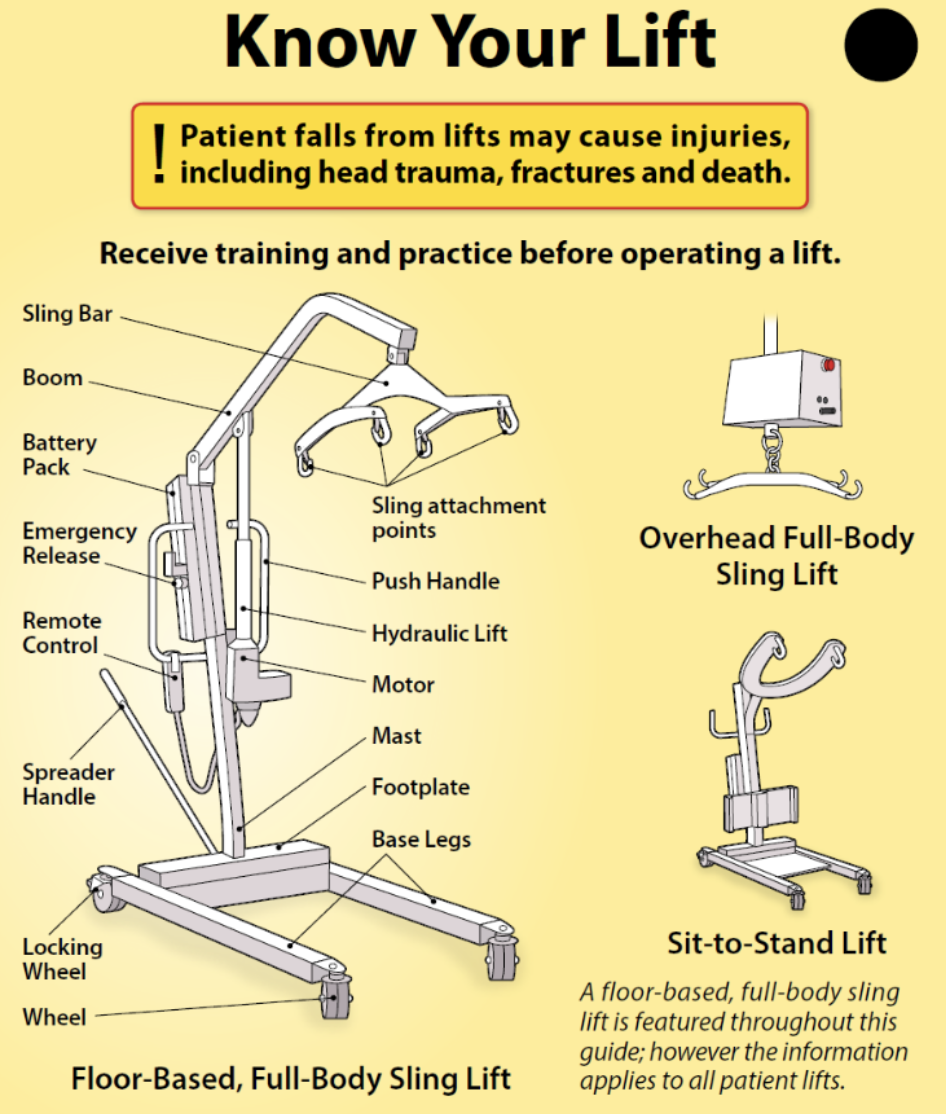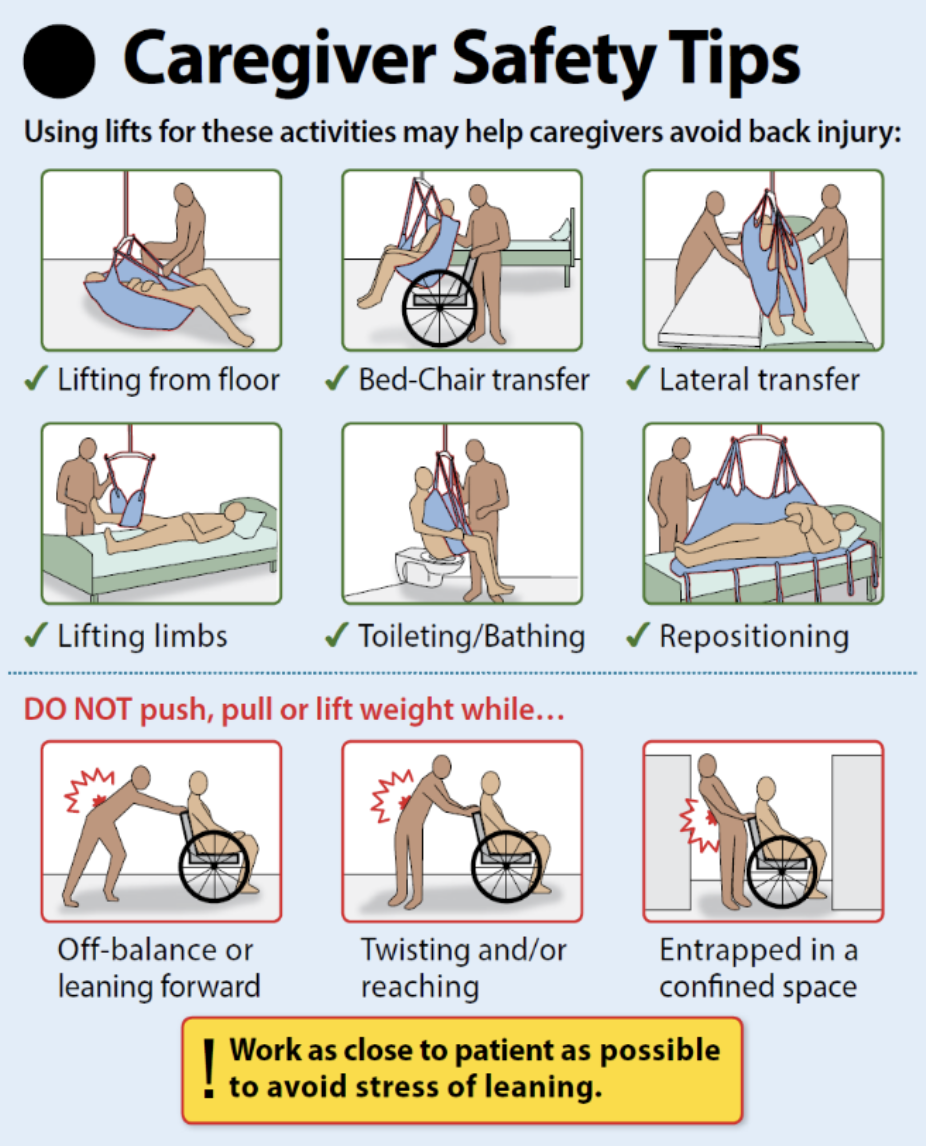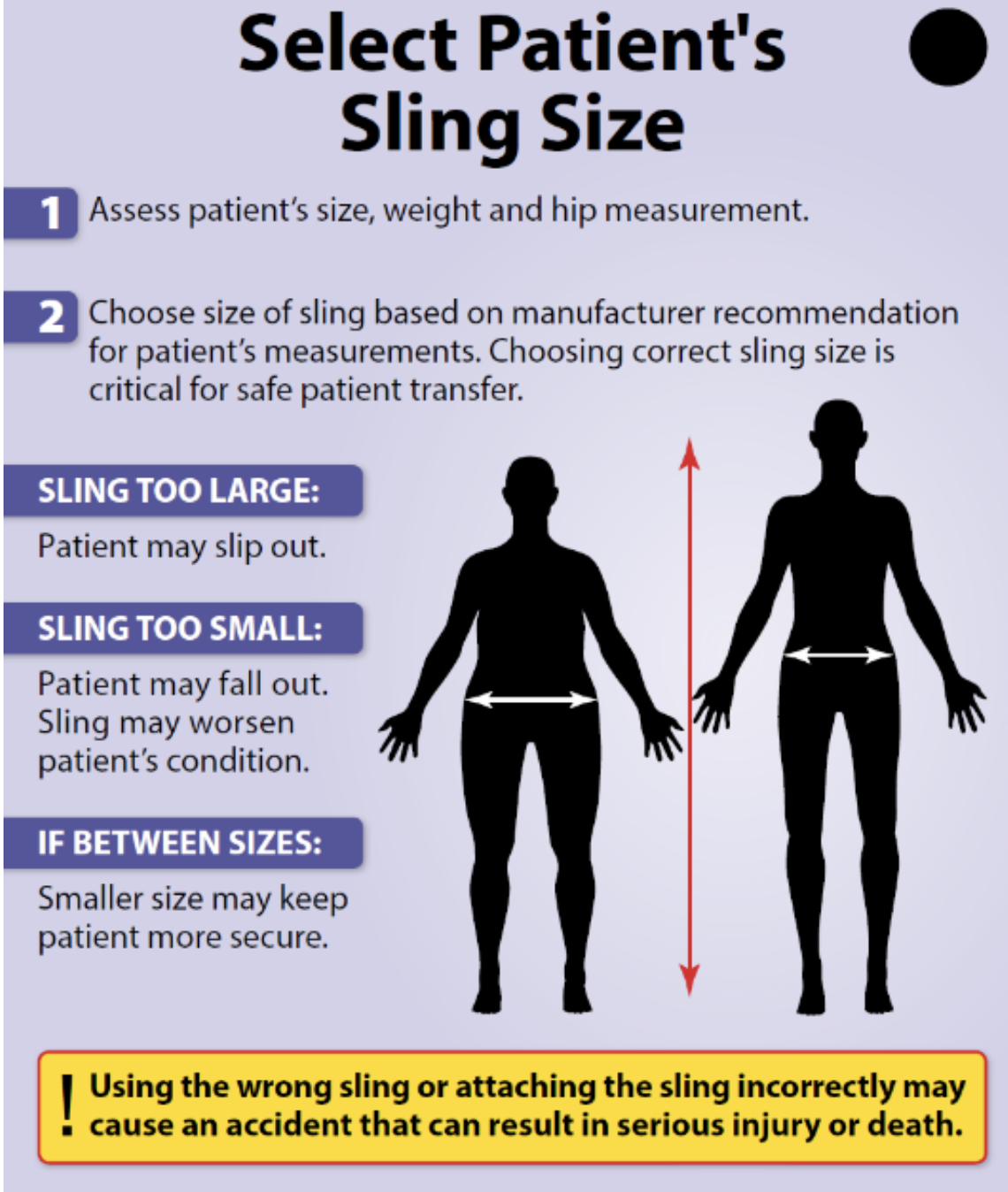8.9 Transferring a Client Using a Mechanical Lift
Transfers Using Mechanical Aids: Overview

Many times you will be caring for clients who cannot assist you transferring them because they cannot bear weight. Mechanical lifts are safe solutions used to move a client from one position or place to another. Most often when working for an agency, they will likely have a no-lifting policy in place. A no-lifting policy means health care providers are not to manually try to lift a client, as this may cause serious injury to the client and/or care provider. Wherever you are employed, be sure you know the policy related to lifting clients!
Mechanical lifting equipment may vary from agency to agency, but the principle in their use is very similar. However, knowing how to use one does not mean you will know how to use other types. You should follow the agency procedures and know the instructions of the equipment manufacturer.
Before using any mechanical lift equipment, be sure:
- You are trained in its use.
- The lift is in good working order.
- The client’s weight does not exceed the lift capacity.
- You have reviewed the client’s transfer plan (care plan).
- You have two people to carry out the lift.

Transfers Using Mechanical Aids
Depending on the point-of-care risk assessment, the health care worker may choose to use a mechanical aid to assist with transferring a client. The following videos provide some general direction to do this. It is the HCA’s responsibility to be oriented to the equipment they are working with and always use it in a safe manner.
Watch the following videos on Transfers Using a Mechanical Lift developed by Thompson Rivers University – School of Nursing
Kim – How to use a Hammock Sling by TRU Media Production.
Kim – How to Use a Ceiling Lift by TRU Media Production.
Kim – How to Use a Hygiene Sling by TRU Media Production.
| Type of Sling | Indications for Use |
|---|---|
| Universal slings |
|
| Hammock slings |
|
| Hygiene slings |
|
Special Considerations:
- All mechanical aids have weight restrictions. Check your agency equipment and guidelines.
- All equipment has specific manufacturer’s guidelines for use.
- It is the agency’s responsibility to provide orientation resources on how to use all equipment.
- It is the health care worker’s responsibility to be oriented to the use of all equipment being used.

Critical Thinking Exercises
- When using a ceiling lift, provide the rationale for your choice of the type of sling you should use when:
- transferring a client to a shower chair
- transferring a client to a wheelchair
Image Descriptions
Figure 8.9.2 Caregiver Safety Tips
Using lifts for these activities may help caregivers avoid back injury:
- lifting from floor
- bed-chair transfer
- lateral transfer
- lifting limbs
- toileting/bathing
- repositioning
DO NOT push, pull or lift weight while…
- off-balance or lean forward
- twisting and/or reaching
- entrapped in a confined space
Work as close to client as possible to avoid stress of leaning.
Figure 8.9.3 Selecting Sling Size
- Observe and evaluate the client’s size. If needed take their weight and hip measurements.
- Choose size of sling based on manufacturer recommendation for client’s measurements. Choosing correct sling size is critical for safe client transfer.
- Sling too large: client may slip out.
- Sling too small: client may fall out. Sling may worsen client’s condition.
- If between sizes: smaller size may keep client more secure.
Using the wrong sling or attaching the sling incorrectly may cause an accident that can result in serious injury or death.
- (Data source: Stewart, 2018) ↵
A general term for feeding tubes that are passed into the stomach or small intestine and provide liquid nutritional formula. They are used for clients who are unable to swallow or take food orally.

